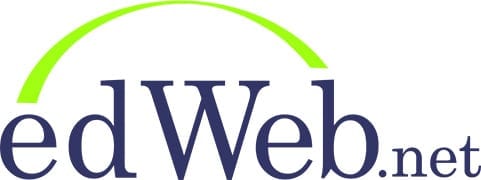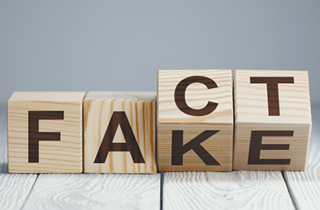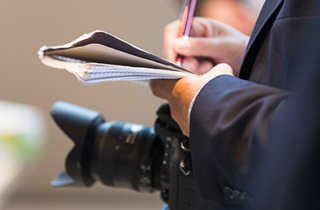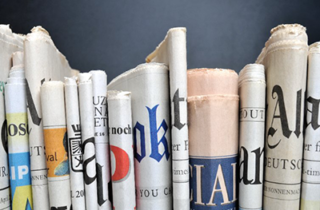Presented by Brittney Smith, Senior Manager of Education Partnerships, The News Literacy Project; and Peter Adams, Senior Vice President of Research and Design, The News Literacy Project
Presented by Paul Beckett, Assistant Editor, The Wall Street Journal; and Brittney Smith, Senior Manager of Education Partnerships, The News Literacy Project
Presented by Dr. Melissa Clarke, Physician, Author, Speaker, and Patient Advocate; and Brittney Smith, Senior Manager of Education Partnerships, News Literacy Project
Presented by Chris Payne, Senior Audio Production Manager, Nearpod and Flocabulary; Ime Ekpo, Cultural Journalist; and Brittney Smith, Senior Manager of Education Partnerships, The News Literacy Project
Presented by Alexa Volland, Senior Manager of Educator Professional Learning, The News Literacy Project; and Brittney Smith, Senior Manager of Education Partnerships, The News Literacy Project
Presented by Adriana Lacy, Journalist, Founder and CEO, Adriana Lacy Consulting; Shane Harris, Staff Writer, Intelligence and National Security, The Washington Post; Indira Lakshmanan, Global Enterprise Editor, The Associated Press; Mindy Katz, English Teacher, JSU Sponsor, Abington Senior High School (PA); and Brittney Smith, Senior Manager of Education Partnerships, East, The News Literacy Project
Presented by Dr. Jeff Wilhelm, Distinguished Professor of English Education, Boise State University, and Director, Boise State Writing Project; Brittney Smith, Senior Manager of Education Partnerships (East), News Literacy Project; Pamela Brunskill, Senior Manager of Education Design, News Literacy Project; and Shaelynn Farnsworth, Senior Director of Education Partnership Strategy, News Literacy Project
Presented by Alexa Volland, Senior Manager, Educator Professional Learning, News Literacy Project; Jill Hofmockel, Teacher-Librarian, West High School (IA); Molly June Roquet, Education Librarian, Saint Mary’s College of California; and Shaelynn Farnsworth, Senior Director of Education Partnership Strategy, News Literacy Project
Presented by Vanessa Otero, Founder and CEO, Ad Fontes Media
Moderated by Kristi Hemingway, VP of Content and Creative Strategy, EdCuration
Presented by Lalo Alcaraz, Editorial Cartoonist; Signe Wilkinson, Editorial Cartoonist; Peter Adams, Senior Vice President of Research and Design, News Literacy Project; and Darragh Worland, Senior Vice President of Creative Strategy, News Literacy Project











